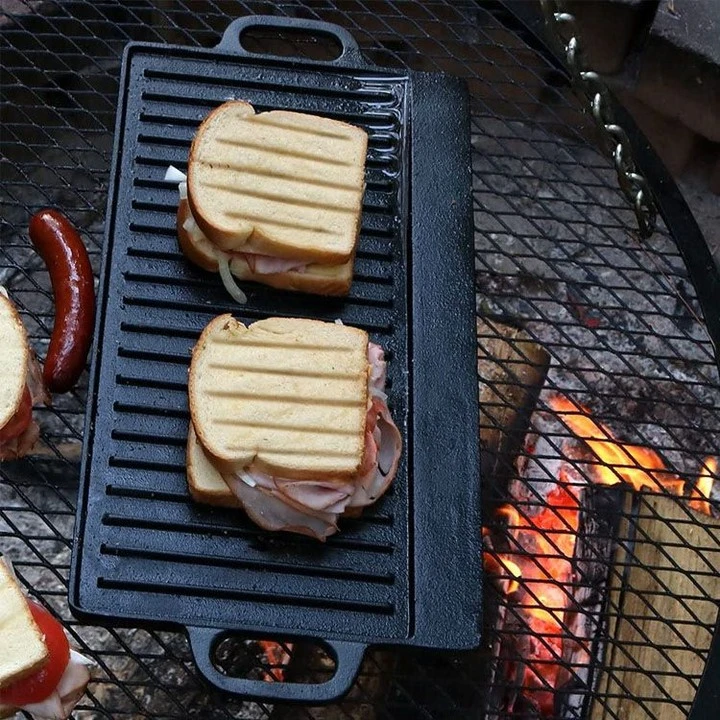
Tips for Properly Coating a Cast Iron Skillet for Longevity and Performance
Coating a Cast Iron Skillet A Comprehensive Guide
Cast iron skillets have long been a staple in kitchens around the world, cherished for their durability, excellent heat retention, and versatility. However, many cooks may wonder about the best ways to care for and maintain their cast iron cookware, particularly when it comes to coating. Properly seasoning your cast iron skillet is crucial to enhance its non-stick properties, prevent rust, and prolong its lifespan. In this article, we will explore the process of coating a cast iron skillet, the materials needed, and tips for maintaining its finish.
Why Coat a Cast Iron Skillet?
The primary purpose of coating a cast iron skillet, through a process known as seasoning, is to create a non-stick surface. This not only improves cooking performance but also helps to protect the skillet from moisture, which can lead to rust. A well-seasoned skillet can transform your cooking experience, allowing you to prepare everything from eggs to cornbread with ease.
Materials Needed
To coat your cast iron skillet effectively, you will need the following materials
1. Cast Iron Skillet Ensure it is clean and free of rust or debris. 2. Soap and Water To wash the skillet if it is dirty. 3. Drying Cloth or Paper Towels For drying the skillet after washing. 4. Cooking Oil Choose an oil with a high smoke point, such as vegetable oil, canola oil, or flaxseed oil. 5. Baking Sheet To catch any drips while the skillet is in the oven. 6. Oven For the seasoning process.
Step-by-Step Coating Process
1. Cleaning the Skillet Start by cleaning your cast iron skillet with soap and water. While some enthusiasts recommend avoiding soap, using a little to remove food residue is acceptable. Rinse thoroughly and dry completely with a cloth or paper towel.
2. Apply the Oil Pour a small amount of cooking oil onto the skillet. Using a paper towel, spread the oil evenly over the entire surface, including the inside, outside, and handle. Be sure not to leave excess oil, as this can create a sticky residue.
coating a cast iron skillet

3. Preheat the Oven Preheat your oven to 450°F (232°C). This high temperature is essential for the oil to polymerize and create a hard, non-stick coating.
4. Bake the Skillet Place the skillet upside down on the middle rack of the oven. Put a baking sheet on the rack below to catch any drips. Bake the skillet for about an hour. This process allows the oil to bond to the skillet, forming a protective layer.
5. Cool Down After an hour, turn off the oven and let the skillet cool inside. This gradual cooling process helps to create a more durable finish.
Maintenance Tips
1. Regular Use The more you use your cast iron skillet, the better seasoned it becomes. Cooking with oil or fat helps to maintain the coating.
2. Cleaning After each use, clean your skillet with hot water and a stiff brush. Avoid using soap unless necessary, and never soak it in water.
3. Re-seasoning Depending on usage, re-season your skillet every few months or if you notice food starting to stick. Follow the same process outlined above for coating.
4. Storage Store your cast iron skillet in a dry place. If stacking with other cookware, place a paper towel between pieces to absorb moisture.
In conclusion, coating a cast iron skillet is an essential aspect of its maintenance. With proper care, your skillet can last a lifetime, providing you with delicious meals while enhancing your cooking skills. Happy cooking!
-
Season Cast Iron Perfectly with GPT-4 Turbo TipsNewsAug.01,2025
-
High Quality Cast Iron Cookware - Baixiang County Zhongda MachineryNewsAug.01,2025
-
Premium Cast Iron Pan: Durable & Perfect HeatNewsAug.01,2025
-
High Quality Kitchen Durable Black Round Cast Iron Cookware Pancake Crepe Pan-Baixiang County Zhongda Machinery Manufacturing Co., Ltd.NewsAug.01,2025
-
Cast Iron Cookware - Baixiang County Zhongda Machinery | Nonstick, Heat ResistanceNewsAug.01,2025
-
High Quality Kitchen Durable Black Round Cast Iron Cookware - Baixiang County Zhongda Machinery | Non-Stick, Heat Retention, DurableNewsJul.31,2025


